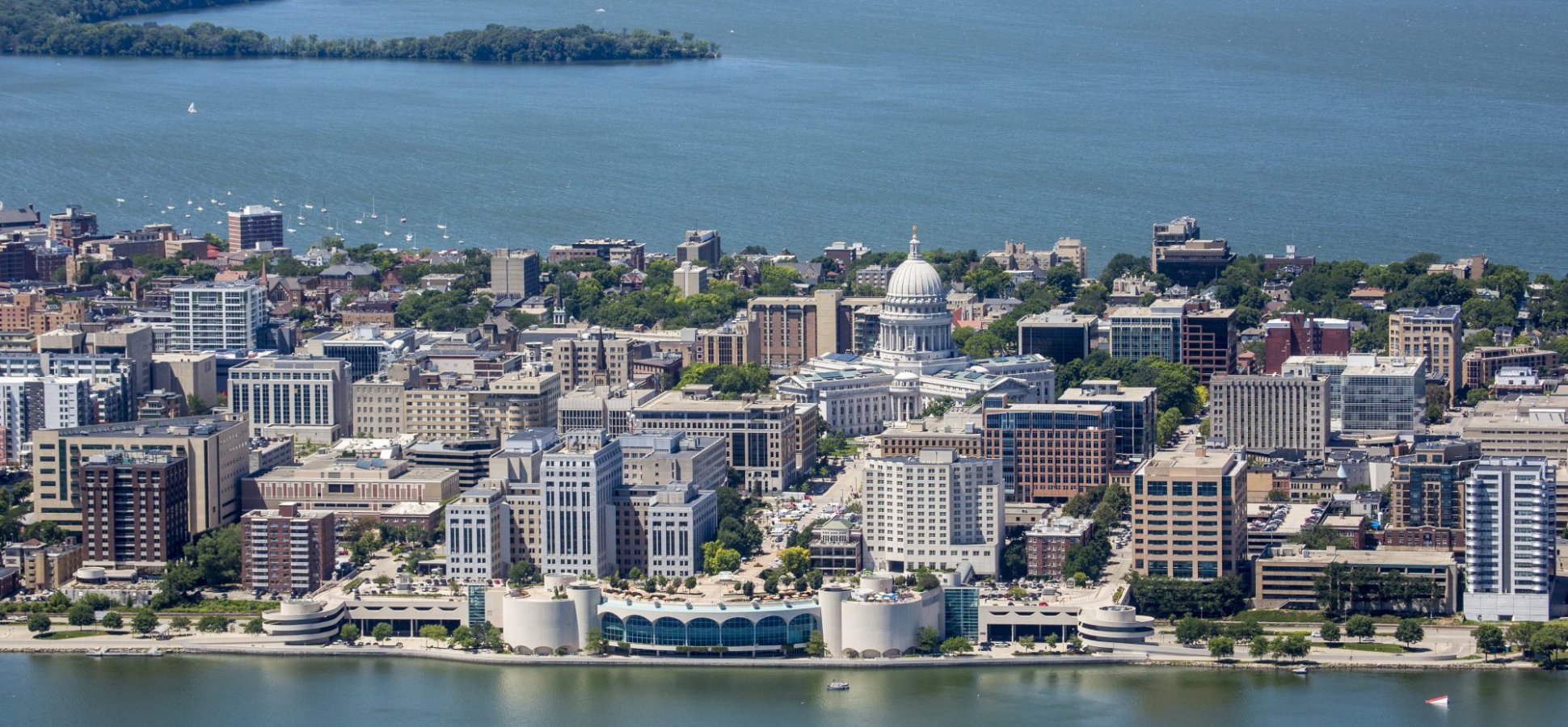I was pleasantly surprised to read the editorial headline in today’ Wisconsin State Journal: A surface parking lot for Downtown lakefront? Really?
It begins: “Madison’s beautiful lakefront in the heart of Downtown is definitely not the place for a surface parking lot. Yet 58 stalls painted onto a long swath of concrete fill much of the Lake Monona shoreline in Law Park between Machinery Row and Monona Terrace. Our city can — and must — be more creative with such prime public space.”
I strongly agree. Why was a surface parking lot built right next to the lake at all? What past city leaders allowed this? (I know some of the history and context of this–government workers demanded more parking downtown, close to their offices– but I won’t bore anyone with those details here.)
But reading the rest of the editorial, a familiar sinking feeling engulfed me–about Madison’s denial of its toxic past.
As I wrote in It Ain’t Wright, Law Park and Monona Terrace were built over a city dump that was never remediated. To this day, subsistence anglers, including many people of color, fish from the leaching underwater dump–as my dad and his brother did in the 30s, 40s and 50s.
Nobody wants to talk about this glaring environmental injustice at “Madison’s beautiful lakefront in the heart of Downtown.” Today’s editorial and recent articles about the future developments the city plans at the lakefront don’t mention the toxic dump under the area, and how new developments there would affect the lakes, fish, and people who eat the fish.
But the State Journal wrote about the dump there in the past…
Madison: “It was a dump”
Ironically, Madison newspapers are still buried under Law Park–likely leaching toxic metals from newsprint inks and who knows what other poisons into Lake Monona. In 2007, under the subheading “It was a dump,” Wisconsin State Journal’s own Ron Seely wrote:
“Even such a glittering landmark as the Monona Terrace sits atop garbage. Between 1946 and 1951, the lakeshore from which Monona Terrace now rises, part of Law Park, was a dump where trash from Downtown was simply shoved into the lake. The building rests on 1,750 steel pilings that were driven down through the compacted trash to the gravel and rock lake bed.” (Correction-–the lakeshore dump was already there in the 1930s).
In another section of his story, Seely cited David Benzchawel, who had just retired as a civil engineer for the city. Benzchawel, Seely explained, “spent more than 20 years compiling a map of the dozens of old dump sites scattered across the city of Madison.” Here’s an excerpt:
“The kind of garbage he dug up would often provide the clues Benzschawel needed to date the site. Some old locations, especially major historic disposal sites such as Law Park, contained lots of newspapers.
‘That’s how we could tell the ages of the waste in some of these places,’ Benzschawel recalled. ‘You just pull the newspaper out and read the date.”
Often, Benzschawel’s sleuthing would lead to fascinating historical anecdotes.
For years, he was told, garbage was simply shoved into Lake Monona at Law Park. A snow fence hooked on poles and driven into the lake bed captured trash before it could float away.
‘The stuff that floated would get caught in the fence,’ Benzschawel said, “and you’d have to go out in a boat and collect it.’”
Why won’t the Wisconsin State Journal–or public officials, or anyone–talk about this anymore, especially as the city is planning to redevelop the whole shoreline?


